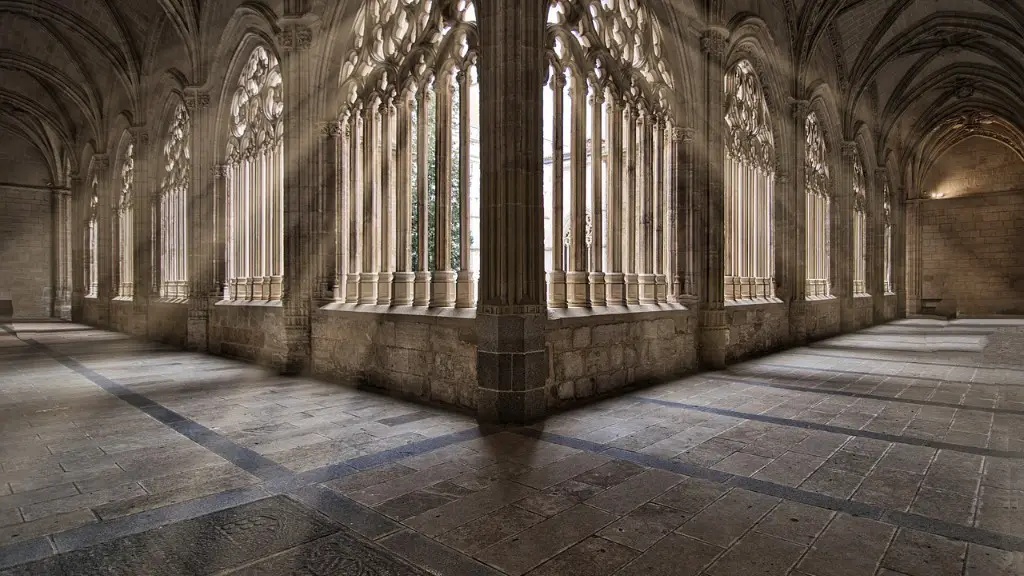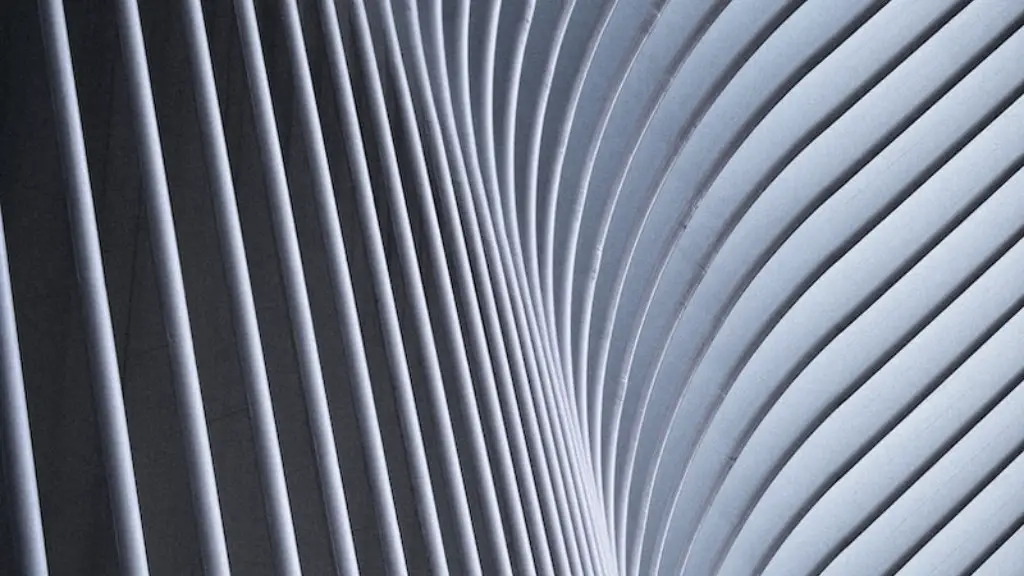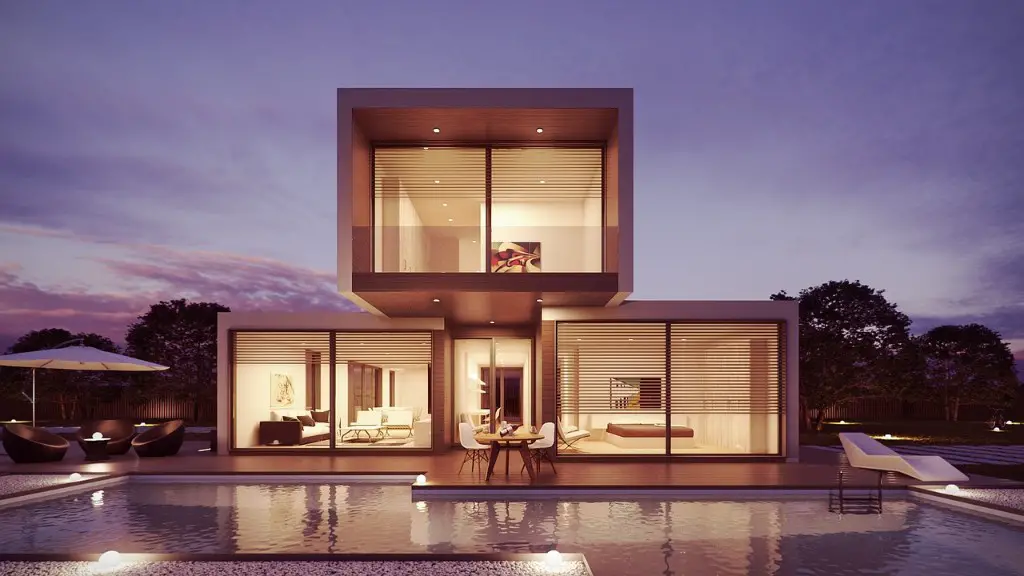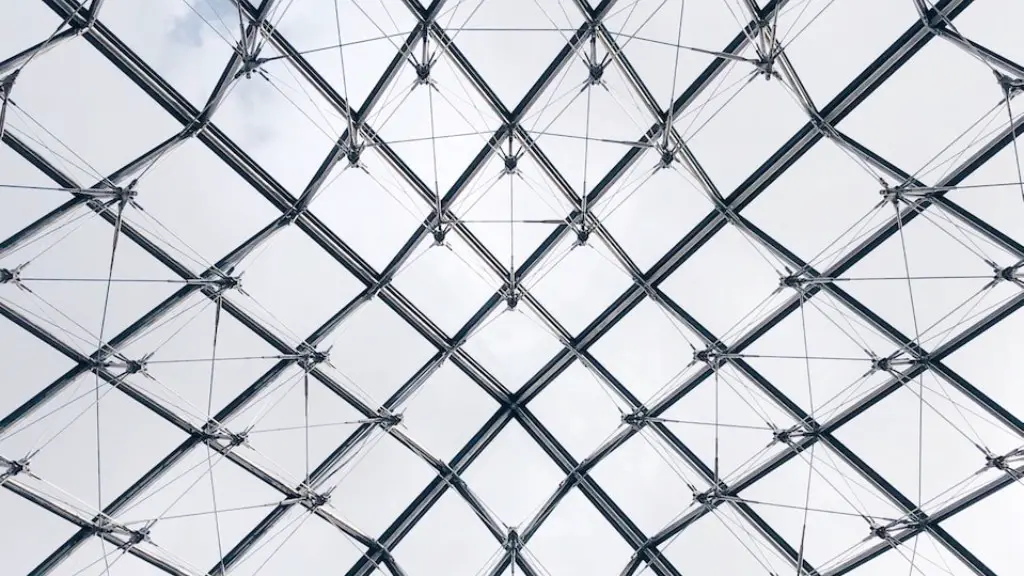Islamic architecture is a form of architecture developed throughout the Islamic world with features including arches, domes, and minarets. Islamic architecture is centered around the values of Islam and its core principles of simplicity and unity, as it has influenced many other cultures. Islamic architecture revolves around the theme of geometry and proportion – taking from ancient Roman and Byzantine-style domes and arches, and mismatching them to make them uniquely Islamic.
Islamic buildings have many forms and have been influenced by many different cultures. From the great mosques of Iran to the beautiful mosques of Turkey, Islamic architecture follows the same theme of unity and harmony. These buildings have evolved over time, but each carries a timelessness that echoes the spirit of the original Islamic architects.
The most remarkable feature of Islamic architecture is the use of geometric patterns. This is a common occurrence throughout Islam, in everything from the intricate mosaic designs of the Alhambra in Spain to the deserts of Morocco. Islamic buildings are often decorated with intricate geometric patterns, and this is a reflection of the Islamic faith and values of unity and simplicity. These geometric patterns also create a sense of order and beauty in the buildings.
One of the key features of Islamic architecture is its emphasis on open spaces. This is seen in the great courtyards of the Alhambra and in the inner sanctums of mosques. By using open spaces, Islamic architects were able to create a sense of unity and harmony in buildings. As opposed to the traditional Western style, where the focus is on enclosed and often cramped spaces, Islamic buildings are focused on creating an atmosphere of openness.
The use of light and shadow is another prominent feature of Islamic architecture. Islamic architects took advantage of the sun’s shadows in order to create a beautiful effect in their buildings. By placing large windows and domes in certain places, they were able to create a stunning visual effect that was pleasing to the eye. This use of light and shadow also created a sense of depth and three-dimensionality in the buildings.
Islamic architects also looked to the natural environment when designing buildings. Their intricate use of nature and landscaping often results in stunningly beautiful buildings. Whether it be the use of foliage, courtyards, or gardens, Islamic buildings often use nature to create a peaceful and calming atmosphere.
Islamic architecture is a unique style of architecture with its own unique features and aesthetics. It is a reflection of the Islamic faith and culture as well as a tribute to the spirit and unity of the Islamic world. With its strong emphasis on simplicity and unity, it is no wonder that Islamic architecture has had such an enormous influence on other cultures and continues to inspire architects even today.
Perspectives From Experts
Islamic architecture is a complex field of study, involving multiple cultures and historical perspectives. For this reason, experts on Islamic architecture come from a variety of backgrounds, from historical scholars to modern architects. Many experts stress the importance of understanding the cultural context of each building and how it fits into the greater Islamic community. Experts often stress the importance of incorporating the spiritual aspects of each structure, creating a unique atmosphere that is harmonious and peaceful.
Experts also stress the importance of understanding the practical and technical aspects of Islamic architecture. This includes the use of geometry, and the importance of planning and constructing in a way that fits within the Islamic worldview. This often involves utilizing the latest technology, such as computer-aided design (CAD), to ensure that buildings are properly designed and that they meet all necessary regulations.
Experts also emphasize the importance of conservation, respect, and the reverence of the past. This is especially true of Islamic architecture, as many experts believe that it is important to preserve the legacy of Islamic architecture and to ensure that its place in history is not forgotten.
Background Information
The roots of Islamic architecture go back to the time of the Prophet Muhammad and the rise of the Islamic faith in the 7th century. Islamic architecture has spread from its original base in the Arabian Peninsula to regions across the world and today can be seen in mosques, forts, palaces, tombs, hospitals and even in everyday homes. The distinct features of Islamic architecture are often seen in traditional Islamic countries, and have had an influence in the architecture of other civilisations.
In Islamic architecture, the main focus is on creating an atmosphere of peace, unity and order. Many of the structures are designed with great attention to detail and symmetry, creating a sense of harmony and balance. This can be seen in the use of geometric patterns, repetition of certain elements, the use of open spaces, and the use of light and shadow. These are all important aspects of Islamic architecture and serve to create a unique and beautiful atmosphere.
Another important aspect of Islamic architecture is that it is often labelled as ‘green architecture’ due to its focus on the conservation of resources and the use of natural materials. Many Islamic structures are built using bricks, straw and mud, materials which are renewable and help conserve energy. Other features of Islamic architecture such as wind catchers and towers can help keep the buildings cool and reduce its dependence on artificial cooling systems.
Data & Analysis
The scale of Islamic architecture has been enormous. Examples of Islamic architecture can be found everywhere from the small desert village of Harrar in Ethiopia to the elaborate Alhambra palace of Granada in Spain. The monumentality of the structures demonstrates the power of the Islamic faith and culture, and the impact it has had on the region.
In Islamic architecture, there is a great focus on proportion and symmetry. This is often seen in the repetition of certain motifs, the intricate details and the harmonious use of materials. These elements are often used to create a unified and pleasing aesthetic that is both complex and calming. This sense of order is also used to create a sense of unity and to reflect the values of Islam.
The use of geometry is also a prominent feature of Islamic architecture. There is an emphasis on creating a sense of balance and unity, and geometric patterns are used to achieve this. These patterns, often simple in design, help create the sense of unity and community that is essential to the Islamic faith.
However, despite the great amount of detail and beauty of Islamic architecture, it is also practical and durable. Significant investments in structural engineering have often been made by Islamic scientists, such as the research and development of arches and domes. This has allowed buildings to stand the test of time, as evidenced by many buildings still standing today.
Innovations & Technologies
Throughout the centuries, Islamic architecture has incorporated new technologies and innovations. From water systems designed to catch and store rainwater to wind catchers which help to cool buildings and create air flow, the culture has seen advances in the way architecture can create comfort and functionality.
Other advances have included the invention of arches, domes and other structures which can be seen in many Islamic structures. The use of these structures has enabled buildings to be constructed on a much larger scale, allowing for more complex and monumental buildings.
Modern day architects also look to Islamic culture to find new and innovative ways of designing. This can include the use of solar panels, green roofs and other forms of sustainable architecture. Islamic architecture, as with all architecture, is constantly developing and adapting to the current trends and challenges posed by the modern world.
Cultural Significance
Islamic architecture has had an enormous influence on other cultures and has been the source of inspiration for many artists and architects. From the Middle East to the Mediterranean, the influence of the Islamic world has been seen in the architecture of other countries and cultures.
The most significant part of Islamic architecture is its connection to Islamic culture. The structures and designs often reflect the values of the Islamic faith, creating a sense of unity, spirituality and harmony that can be seen in all Islamic structures. This can be seen not only in the designs, but also in the spiritual atmosphere created by the buildings which often become places of worship, reflection and celebration.
The influence of Islamic architecture extends beyond the Islamic world, and is seen in the architecture of other cultures and countries. Elements such as the use of geometry, the emphasis on open spaces and the use of light and shadow can all be seen in the architecture of countries as far-reaching as Spain, India, China and Japan. This demonstrates the importance of Islamic architecture, and its place in the history of architecture and design.
Impact On Society
Islamic architecture has had a major impact on the societies in which it exists. One of the most notable impacts it has had is in creating a sense of order and unity within the Islamic faith. The structures that were created often demonstrate a commitment to the Islamic faith and its beliefs. This has helped to create a sense of belonging and community within the Islamic faith, which has been essential to its success.
Islamic architecture has also had an impact on the world of architecture. The structures of the Islamic world often serve as a source of inspiration for modern-day architects. The use of geometry, the importance of open spaces, and the use of nature have all been catalysts for architectural innovation. These ideas have gone on to inform the work of architects across the world.
Finally, Islamic architecture has also had a major cultural impact. The buildings have become iconic symbols of the Islamic world, and this visual representation has been used to spread the message of the Islamic faith and its teachings. This is only further proof of the lasting impact Islamic architecture has had on the world.





